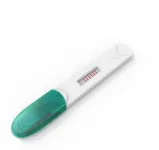(Press-News.org) Hypoxic-ischemic encephalopathy (HIE) is one of the leading causes of newborn mortality and morbidity worldwide, and lowering the baby’s body temperature—called therapeutic hypothermia—is often used as a treatment. A review in Developmental Medicine and Child Neurology highlights additional therapies for HIE that are being tested with and without concomitant therapeutic hypothermia.
Neonatal HIE is characterized by neurological dysfunction resulting from inadequate oxygen and blood flow to the brain near the time of birth. Therapeutic hypothermia is an established therapy in high-income countries, but many infants still die or experience neurodevelopmental consequences after treatment. Moreover, in low- and middle-income countries, where the burden of HIE is the highest, therapeutic hypothermia was recently shown to be ineffective.
The new review notes that investigational therapies for HIE include agents that block excessive activation of glutamate receptors, drugs that act as antioxidants or anti-inflammatories, and products that target multiple neuroprotective pathways.
“Therapeutic hypothermia for moderate-to-severe neonatal HIE is one of the success stories in newborn care, but there is an urgent need to identify additional therapies that are effective both with and without therapeutic hypothermia,” said corresponding author Natalie H. Chan, MD, MPH, of the University of California, San Francisco. “Our paper reviews the promising therapies being evaluated in clinical studies that could close the remaining gap in optimizing outcomes in all babies with HIE.”
URL upon publication: https://onlinelibrary.wiley.com/doi/10.1111/dmcn.16184
Additional Information
NOTE: The information contained in this release is protected by copyright. Please include journal attribution in all coverage. For more information or to obtain a PDF of any study, please contact: Sara Henning-Stout, newsroom@wiley.com.
About the Journal
Developmental Medicine and Child Neurology (DMCN) is a multidisciplinary journal that has defined the fields of paediatric neurology and childhood-onset neurodisability for over 60 years. DMCN disseminates the latest clinical research results globally to enhance the care and improve the lives of disabled children and their families.
About Wiley
Wiley is one of the world’s largest publishers and a trusted leader in research and learning. Our industry-leading content, services, platforms, and knowledge networks are tailored to meet the evolving needs of our customers and partners, including researchers, students, instructors, professionals, institutions, and corporations. We empower knowledge-seekers to transform today’s biggest obstacles into tomorrow’s brightest opportunities. For more than two centuries, Wiley has been delivering on its timeless mission to unlock human potential. Visit us at Wiley.com. Follow us on Facebook, X, LinkedIn and Instagram.
END
Is therapeutic hypothermia an effective treatment for hypoxic-ischemic encephalopathy, a type of neurological dysfunction in newborns?
2024-11-20
ELSE PRESS RELEASES FROM THIS DATE:
Scientists discover the molecular composition of potentially deadly venomous fish
2024-11-20
New research in FEBS Open Bio reveals insights into the venom of two of the most venomous fish species on earth: the estuarine stonefish (Synanceia horrida) and the reef stonefish (Synanceia verrucosa), which are typically found in the warm and shallow regions of the Indo-Pacific region, the Persian Gulf, and the Red Sea.
Through multiple analytical techniques, investigators discovered the presence of three neurotransmitters new to stonefish venom, namely gamma-aminobutyric acid (GABA), choline, and 0-acetylcholine. Although these molecules ...
What are the belowground responses to long-term soil warming among different types of trees?
2024-11-20
Through a 20-year experiment, investigators have shown how different trees adjust their strategies for acquiring nutrients through their roots as soil warms with climate change.
The research, which is published in Global Change Biology, included trees that associate with different fungi that help roots absorb nutrients. Measurements showed that when exposed to warmer soils, oak trees associated with ectomycorrhizal fungi reduce interactions with soil microbes while increasing fine root exploration, whereas maple trees that associate with arbuscular mycorrhizal largely maintain ...
Do area-wide social and environmental factors affect individuals’ risk of cognitive impairment?
2024-11-20
Research published in the Journal of the American Geriatrics Society has identified several community-level factors that may increase people’s risk of experiencing cognitive impairment.
In the study of 2,830 dementia-free US individuals aged 65+ years, 23.2% of participants were categorized as having mild cognitive impairment. People who lived in areas with higher neighborhood disadvantage, higher air pollution, higher homicide rate, and less greenspace had elevated odds of having mild cognitive impairment. Completing schooling in a Southern US state was also associated with a greater likelihood of ...
UCLA professor Helen Lavretsky reshapes brain health through integrative medicine research
2024-11-20
LOS ANGELES, California, USA, 20 November 2024 – In a comprehensive Genomic Press Interview, Professor Helen Lavretsky reveals how her pioneering work in integrative psychiatry is transforming approaches to mental health and aging. The interview, featured in the peer-reviewed medical research journal Brain Medicine (doi: 10.61373/bm024k.0130), offers unique insights into the evolution of integrative medicine from scientific skepticism to evidence-based acceptance.
Professor Lavretsky, current President of the American Association for Geriatric Psychiatry (2022-25), has successfully merged conventional ...
Astronauts found to process some tasks slower in space, but no signs of permanent cognitive decline
2024-11-20
A stay in space exerts extreme pressures on the human body. Astronauts’ bodies and brains are impacted by radiation, altered gravity, challenging working conditions, and sleep loss – all of which could compromise cognitive functioning. At the same time, they are required to perform complex tasks, and minor mistakes can have devastating consequences.
Little is known, however, about whether astronauts’ cognitive performance changes while in space. Now, working with 25 astronauts who spent an average of six month on the International Space Station (ISS), researchers in the US have examined changes in a wide range of cognitive performance domains. ...
Larger pay increases and better benefits could support teacher retention
2024-11-20
Larger pay increases and better benefits could help keep K-12 teachers in the teacher workforce, finds a new, nationally representative RAND survey.
U.S. teachers reported modest pay increases between the 2022-2023 and 2023-2024 school years, only $2,000 on average and well below their desired increase of $16,000. Black teachers and teachers in states where collective bargaining is prohibited reported they received the smallest pay increases.
“Teachers who received larger pay increases also said they were less likely to intend to leave the profession,” ...
Researchers characterize mechanism for regulating orderly zygotic genome activation in early embryos
2024-11-20
Early development of an embryo is solely supported by maternally deposited RNAs and proteins until its own genome is activated through a process called zygotic genome activation (ZGA).
Recent research by Chinese scientists has revealed novel molecular mechanisms by which HIRA acts in concert with dPCIF1 to establish a totipotent chromatin and facilitate orderly zygotic genome activation in the early embryos of Drosophila.
Results of the study were published in PNAS on Nov. 14 as “HIRA and dPCIF1 coordinately establish totipotent chromatin and control orderly ZGA in Drosophila embryos.”
The ...
AI analysis of urine can predict flare up of lung disease a week in advance
2024-11-20
Researchers have used artificial intelligence (AI) to analyse patient urine samples and predict when symptoms of chronic obstructive pulmonary disease (COPD) will flare up according to a study published today (Wednesday) in ERJ Open Research [1].
The patients taking part in the study carried out a simple daily dipstick test on their urine and sent their results to researchers using their mobile phones.
Using AI to analyse the results, researchers were able to ‘forecast’ a deterioration in symptoms one week in advance. ...
New DESI results weigh in on gravity
2024-11-20
Gravity has shaped our cosmos. Its attractive influence turned tiny differences in the amount of matter present in the early universe into the sprawling strands of galaxies we see today. A new study using data from the Dark Energy Spectroscopic Instrument (DESI) has traced how this cosmic structure grew over the past 11 billion years, providing the most precise test to date of gravity at very large scales.
DESI is an international collaboration of more than 900 researchers from over 70 institutions around the world and is managed by the Department of Energy’s ...
New DESI data shed light on gravity’s pull in the universe
2024-11-20
A University of Texas at Dallas physicist and his international colleagues in the Dark Energy Spectroscopic Instrument (DESI) collaboration are engaged in a multiyear data-gathering mission to try to answer one of the most puzzling observations in astrophysics: Why does the expansion of the universe appear to be accelerating?
Competing theories have attempted to explain this observation. One is that dark energy is somehow pushing galaxies apart. A second theory posits that gravity, the attractive force that in local environments like the solar system draws objects together, works differently at large cosmological scales and needs to be modified to explain cosmic ...



